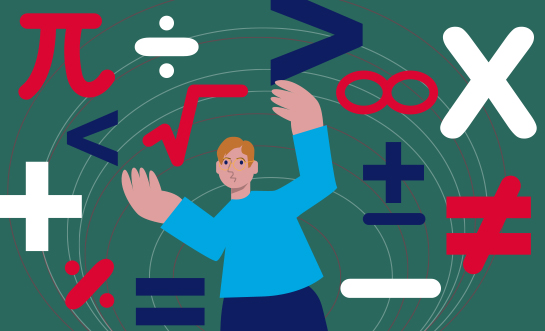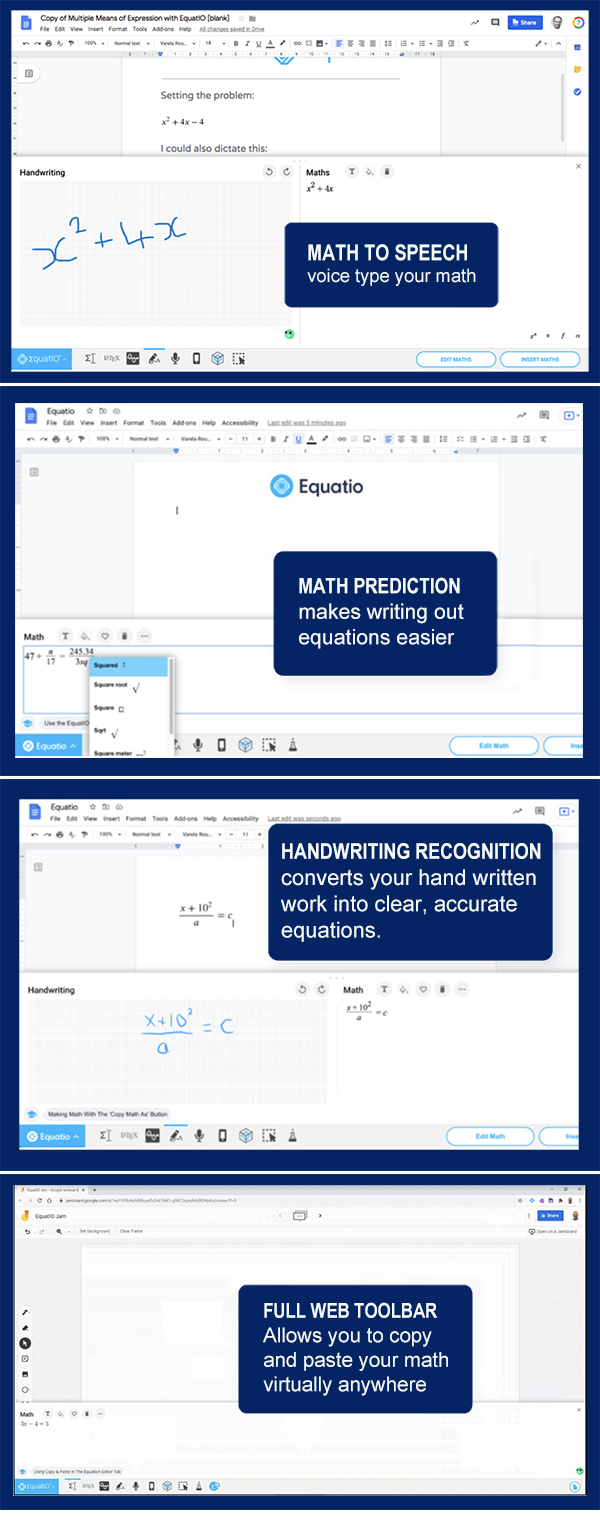Adapting Equatio: Accessibility in Mathematical Notations
quote Heading link
Equatio actively promotes a more inclusive learning environment by accommodating diverse learning styles and needs.
text Heading link

Mathematics is the universal language of science and engineering and has long been recognized as a powerful tool for problem-solving and a fundamental skill for students of all ages. However, the transition to digital learning environments has presented a considerable challenge when it comes to effectively communicating mathematical ideas and equations. Currently, LTS is looking to acquire Equatio, an innovative software tool developed by TextHelp that is leading the charge in transforming the way we interact with math in the digital age, with a particular focus on enhancing accessibility. The tool will be available at the start of the spring semester.
The Accessibility Challenge in Digital Math Communication
In traditional classroom settings, mathematical concepts and equations are often written on chalkboards or whiteboards, offering a straightforward means for both teachers and students to see, understand, and collaborate on mathematical problems. With hyflex, hybrid and online learning, and classrooms increasingly relying on devices and online platforms for instruction, the process of expressing mathematical concepts can be complex, often requiring specialized software or knowledge of intricate LaTeX coding.
CHECK OUT THIS VIDEO INTRODUCING EQUATIO
Text 3 Heading link

This digital transition has resulted in a significant barrier, especially for students and educators who face challenges related to math notation. For these individua ls, the intricacies of mathematical notation can inhibit their ability to fully grasp mathematical concepts, engage in effective problem-solving, and communicate their ideas. Equatio aims to break down these barriers, offering a user-friendly solution for creating and interacting with mathematical content in the digital realm.
Equatio’s Commitment to Accessibility
Equatio offers a wealth of features geared towards promoting accessibility, making it an invaluable tool for educators and students alike:
- Handwriting Recognition: Equatio’s handwriting recognition feature empowers users to write math problems directly on their devices, such as tablets or interactive whiteboards. The software automatically converts handwritten equations into formatted, typed text, ensuring accessibility to a broader audience.
- Math Prediction: As users type mathematical expressions, Equatio provides predictive suggestions for functions and symbols. This predictive feature is a valuable aid in helping students understand the language of math and minimizing errors.
- Voice Input: For individuals who may encounter difficulties in typing or writing equations, Equatio offers voice input. Users can simply articulate their math problems, and the software adeptly transforms spoken words into mathematical notation.
- Accessibility and Inclusivity: Equatio is thoughtfully designed with accessibility at its core. It incorporates features such as screen reading compatibility and voice output, ensuring that mathematical content is accessible to individuals with diverse learning needs.
- Integration with Popular Platforms: Equatio seamlessly integrates with widely used learning management systems and digital platforms, including Google Workspace, Microsoft Office, and various web browsers. This seamless integration allows for its easy incorporation into existing teaching and learning environments.
- Interactive Digital Whiteboard Support: Teachers can employ Equatio on interactive whiteboards to actively engage students in real-time math problem-solving. This feature enhances collaborative learning, bridging geographical divides, even in remote or hybrid classroom settings.
- Equation Editor: Equatio offers a robust equation editor for creating and editing complex mathematical expressions, equations, and formulas with remarkable ease.
The Transformative Impact on Education
Equatio serves to dismantle the barriers that students may face in their mathematical journey, whether due to learning disabilities, language barriers, or technical challenges related to traditional mathematical notation. This approach enhances students’ capacity to understand and communicate mathematical concepts. For educators, Equatio simplifies the process of creating digital math content, making it more convenient to deliver instruction, offer support, and provide feedback in a variety of learning settings. Furthermore, Equatio actively promotes a more inclusive learning environment by accommodating diverse learning styles and needs. It enables educators to meet students where they are, providing them with the tools they need to succeed. This tool plays a vital role in bridging the digital divide that has previously hindered some students from accessing quality math education in the digital age.